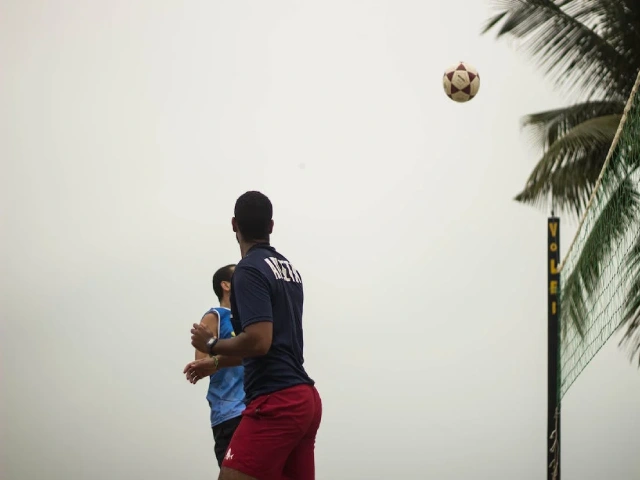Physical Address
304 North Cardinal St.
Dorchester Center, MA 02124

In volleyball, each player has a unique role that contributes to the team’s success. The key question asked is What Volleyball Position Should I Play? It is the best that can be an exciting journey of self-discovery. Let’s go through the process of choosing the right position that aligns with your strengths, attributes, and aspirations.
Do you keep asking yourself what volleyball position should I play? This involves considering various factors, from your physique to skill level and preferences. Let’s get into the requirements and characteristics of each position to help you.
A setter is like the quarterback of the volleyball team. They touch the ball more than any other player, orchestrating the offense by delivering precise sets to hitters. If you have excellent hand-eye coordination, quick decision-making skills, and a knack for strategic play, the setter position might be your calling.
Liberos are defensive specialists who excel in receiving and digging the ball. They wear different colored jerseys and have unique substitution rules. If you thrive in reading opponents’ hits, have remarkable agility, and love being the defensive backbone of the team, the libero position could be perfect for you.
Similar to liberos, defensive specialists focus on digging and passing. They often step in for back-row players to enhance defensive prowess. If you’re agile, have exceptional ball control skills, and enjoy the thrill of keeping the ball alive, the defensive specialist position could be your niche.
Middle blockers play a crucial role in both offense and defense. They excel at blocking opponents’ attacks and executing quick hits. If you possess a strong vertical jump, quick reflexes, and enjoy being a versatile force at the net, the middle position could be your playground.
Outside hitters are primary attackers, often receiving sets from the setter. They need a combination of power, accuracy, and finesse to score points for the team. If you have a strong arm, can adapt to various hitting angles, and love the spotlight as a prominent attacker, the outside hitter position might be your forte.
The opposite hitter is another key attacker, often positioned on the right side of the net. They provide a different angle of attack and are crucial in diversifying the team’s offense. If you’re an all-around hitter with the ability to adapt to different sets and enjoy the challenge of being a versatile attacker, the opposite hitter position could be your realm.
As you explore each position, remember that versatility and adaptability are valued traits. Finding the right position involves discovering where your skills align with your team’s needs.
When it comes to volleyball, your height can play a significant role in determining the most suitable position for you on the court. Tall or short, ask yourself what volleyball position should I play?. Ultimately, while height can influence your position, it’s important to note that volleyball is a sport where diverse skills are valued. Short or tall, your unique abilities and attributes contribute to your team’s success. Below are the positions for both short players and tall players, ensuring that you can excel regardless of your stature.
Short players have a unique advantage in certain aspects of the game, such as agility, speed, and exceptional ball control. Here are some positions that shorter players may find well-suited to their attributes:
Tall players possess a natural advantage when it comes to reaching higher over the net. It helps in making them effective blockers and hitters. Here are positions that tall players might find particularly suitable:
Your dominant hand can significantly influence your performance on the volleyball court. As you consider your dominant hand, remember that continuous growth and adaptability are fundamental in volleyball. Whatever your dominant hand is, there are positions that can harness your natural abilities.
Left-handed players possess a unique advantage, as they bring diversity to the court and often catch opponents off guard. Here are positions that can capitalize on your left-handed prowess:
Right-handed players make up the majority, and their versatility and skills are essential for a well-rounded team. Here are positions that can maximize your potential as a right-handed player:
Your level of experience and skill in volleyball also plays a pivotal role. At this point, if you are wondering what volleyball position should I play. It is okay Whether you’re a beginner or a seasoned pro, there’s a position that aligns with your capabilities.
For those new to the sport, starting with positions that offer a well-rounded experience can be beneficial:
Professional players possess refined skills and a deep understanding of the game. Here are positions that cater to their advanced abilities:
This was all about answering your question of what volleyball position should I play. Choosing the right position is a pivotal decision that can shape your entire experience on the court. As we’ve explored, various factors, from height and dominant hand to skill level. It’s clear that each player brings a unique blend of attributes and abilities to the game.
Your height can determine your role as a defensive specialist, libero, etc… Your dominant hand, left or right, can influence your position.
For beginners, starting as a libero or defensive specialist allows you to focus on fundamental skills. As your skills progress, positions like outside hitter or setter can bring new challenges and opportunities.
Pro players at the professional level often find themselves in dynamic roles. It is where their mastery of the game’s intricacies is put to the test. These positions demand strategic thinking, quick decision-making, and exceptional execution.
Remember, to answer your question of “what volleyball position should I play” know yourself and skills to better answer the question.